Cement is a construction material which is used as a binder. It binds other construction material aggregate and sand together. Cement exhibits different properties if we change the chemical composition. Earlier the different types of cement was found by only varying the relative proportion of the oxide composition.As time advances, new materials like additives to the clinker at the time of grinding, use of new raw materials resulted in production of new variety of cement.The various types of cements as per Indian Standards are-
1.Ordinary Portland Cement(OPC):
Ordinary Portland Cement(OPC)is so far a most important cement.it is available in three grades,namely OPC-33(IS 269:1989),OPC-43 (IS 8112:1989)and OPC-53(IS 12269:1987). Here the grades 33,43 and 53 indicates the strength of cement after 28 days as per IS code.Now a days OPC-33 grade cement is almost obsolete as higher grade of cement has arrived.one of the important benefit of OPC cement is that it develops strength in a faster rate. The initial setting time of OPC cement should not be less than 45 min, and final setting time should not be greater then 10 hr.
2.Rapid hardening Cement:
Also known as high early strength cement, as it develops strength rapidly. The hardening develops at the time of three days only which is gathered by OPC at seven days time.It is because of higher fineness of cement particle,high S content and low S content.IS code for this cement is IS:8041-1990
Applications-
- Road Repair works
- In pre-fabricated concrete construction
- In cold weather concrete to reduce frost damage
- Where formwork is to be removed quickly.
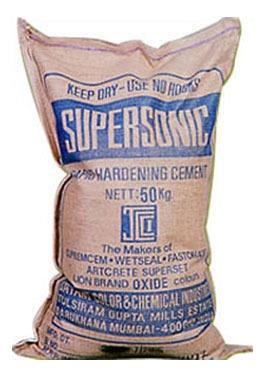
Rapid Hardening Cement
3.Extra Rapid Hardening Cement:
It is obtained by adding CaC in Rapid Hardening Cement.The addition of CaC should not be greater than 2% w/w.The time required for transporting,placing,compacting and finishing should be within 20 min.It should be used within one month of packing.
Applications-
- Concrete drives and paths
- Setting manhole
- Fixing fence post, railings and copings
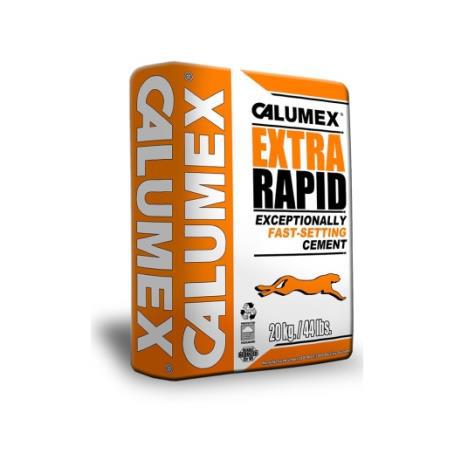
Extra Rapid Hardening Cement
4.Sulphate Resisting Cement:
As a remedy to sulphate attack, Suphate Resisting Cement is used as Ordinary Portland Cement is susceptible to the attack of sulphates. This type of cement has low A and comparatively low AF content. It has high silica content. IS specification limits the A content to 5%.IS code for this cement is IS:12230-1988.Sulphate resisting cement is recommended in following conditions:
- When concrete is used in marine condition
- Concrete to be used in foundation and basement
- Concrete used for fabrication of pipes
- In sewage treatment works
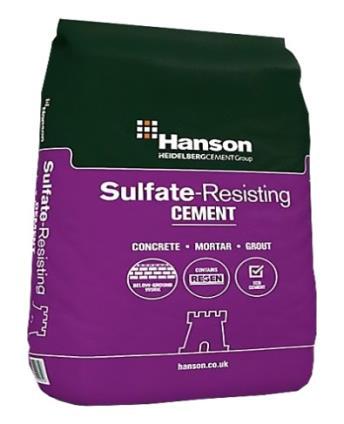
Sulphate Resisting Cement
5.Portland Slag Cement(PSC):
When Portland cement clinker is mixed with gypsum and granulated blast furnace slag in suitable proportions Portland Slag Cement is found. Physical properties of the cement is same as that of OPC,it has low heat of hydration and is relatively better resistant to chlorides, sulphate attack and soil and water containing excessive amount of alkali metals, alumina or iron etc.Therefore,this cement can be used for marine works with advantage.
Extensive research shows that the presence of Ground Granulated Blast Furnace Slag (GGBFS) leads to the enhancement of intrinsic properties of concrete both in fresh and hardened state.Advantages of this cement are-
- Reduced heat of hydration
- Reduced permeability
- Increased resistant to chemical attack.
Portland Slag Cement exhibits very low diffusivity to chloride ions and such slag cement gives better resistance to corrosion of steel reinforcement. Therefore, it is preferable for construction of underground raft for tall buildings in coastal region.Is code for this cement is IS:455-1989.
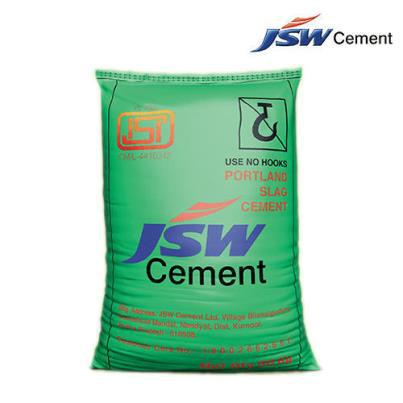
Portland Slag Cement
6.Quick Setting Cement:
As name indicates, this cement sets very early.This early setting property is gained by reducing the gypsum content at the time of clinker grinding.This cement is required to be mixed,placed and compacted very early.It is mostly used in under water construction where pumping is involved. It is also used in grouting operation.
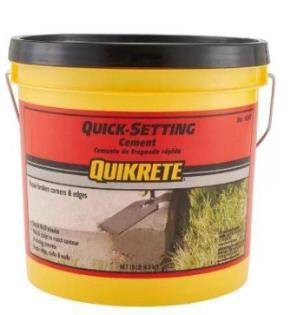
Quick Setting Cement
7.Low Heat Cement:
Using conventional cement leads to formation of cracks due to heat of hydration.Hydration of cement is an exothermic action which produces large quantity of heat during hydration.a low heat cement is achieved by reducing the contents of S and which are the compounds responsible for maximum heat of hydration and increasing S.The feature of low heat cement is slow rate of gain of strength. Other properties like time and soundness are same as that of ordinary Portland cement.IS Code for Low Heat Cement is IS:12600-1989.
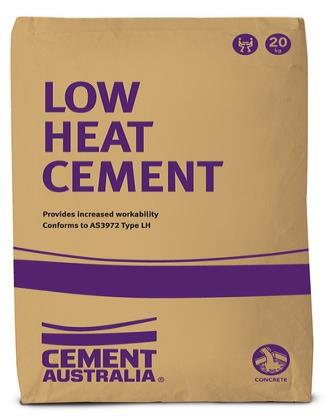
Low Heat Cement
8.Portland Pozzolana Cement:
Portland Pozzolana Cement is manufactured by intergrinding OPC clinker with 10-25% of pozolanic material.A pozzolanic material is aluminous/silicious material which while in finely divided form and in presence of water reacts with calcium hydroxide and forms compounds possessing cementitious properties.The pozzolanic materials are generally calcined clay or fly ash.Fly ash is a waste material which is generated mainly in thermal power stations.
Portland Pozzolana Cement produces less heat of hydration and offer greater resistance from attack of aggressive waters. It reduces leaching of calcium hydroxides when used in hydraulic structure.it is useful in marine and hydraulic construction and in mass concrete. Technically PPC has considerable advantages over OPC when made by using optimum percentage of fly ash.IS Code for this cement is IS:1489-1991
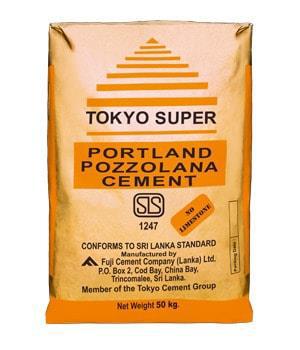
Portland Pozzolana Cement
9.Air Entraining Cement:
This cement is manufactured by mixing a small amount of air entraining agent i.e, 0.1% to 0.3% with OPC clinker at the time of grinding. It offers a good workability due to higher initial setting time than OPC. Some of the air entraining agents are alkali salts of wood resins, calcium lignosulphate and synthetic detergent of alkyl aryl sulphonate. This concrete produces tough, tiny, discrete air bubbles at the time of mixing in the body of concrete which will modify the properties of plastic concrete with respect to workability, segregation and bleeding.Air Entraining Cement is not covered by Indian Code so far.
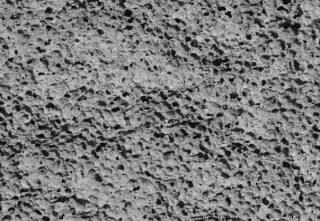
Air Entrained Cement
10.White Cement or Coloured Cement
Coloured cement consists of Portland Cement with 5-10% of pigment. Cryolite or Sodium Alumino Ferrite is added to act as flux in the absence of iron oxide.Whiteness of cement is measured by ISI scale or Hunter’s scale. The properties required of a pigment to be used for coloured cement are the durability of colour under exposure to light and weather. The strength of white cement is much higher than OPC.IS Code for this cement is IS:8042-1989.
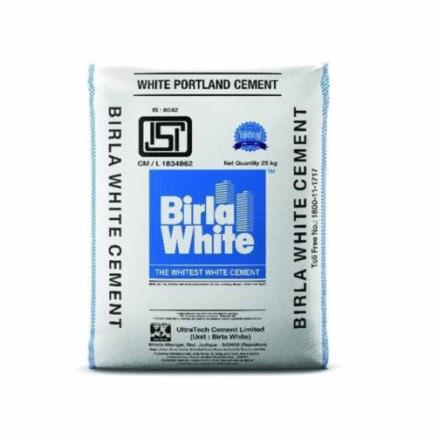
Coloured (white) cement
11.Hydrophobic Cement:
Hydrophobic Cement is obtained by grinding Ordinary Portland Cement clinker with water repellent film forming substance such as oleic acid, and stearic acid.The water repellent film formed around each grain of cement reduces the rate of deterioration of cement during long storage, transport or unfavorable condition.The film is broken out during the time of mixing cement with aggregate exposing the cement particle for normal hydration. If cement is to be transported to far off places where communication is very poor, cement is stored for long time. Then ordinary cement gets deteriorated and loses some of its strength. Hydrophobic cement is the only option for such situation. The cost of this cement is generally higher than OPC. IS Code for this cement is IS:8043-1991.

Hydrophobic cement
If you have a query, you can ask a question here.


